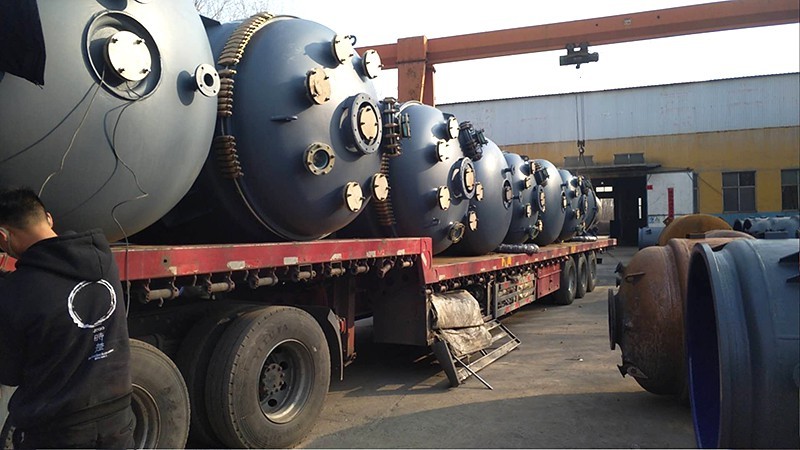Static electricity is a natural physical phenomenon that we often encounter in dry weather and winter. Many people may find that
enamel glass disc condenser also generate static electricity. Why is this? Many people are interested in this issue, so let me explain it to you below.
Static electricity accumulation caused by material flow. In chemical production, flammable and explosive organic solvents such as toluene, ethyl acetate, methanol, ethanol, etc. are used. If they enter the storage tank in the tanker truck, the intermediate tank in the tank, and the intermediate tank in the glass lined reaction kettle, plastic pipes without static electricity removal function or metal pipes with poor static conductivity are used. The flow velocity of the material exceeds 4.5 meters per second and generates static electricity. When the material flows for a long time, electrostatic reactions will occur in the enamel. Accumulation on the inner wall of the kettle.

When the material is injected into the container of the enamel glass disc condenser the pipeline, if the injected material is directly sprayed from the top of the container, a large amount of static electricity will be generated. Meanwhile, the spray injection method also causes material splashing due to the impact of the material on the inner wall of the reaction vessel. It generates static electricity. At the same time, static electricity is also generated during the mixing and rotation of the material in the equipment. Due to the poor conductivity of the reaction vessel equipment, long-term rotation can easily accumulate static electricity.
It is common for enamel glass disc condenser to generate static electricity, so there is no need to worry about it. Not only these types, but if the operator wears clothes made of chemical fibers or wool materials, static electricity may also be generated when in contact with the glass lined reaction vessel or pipeline.



 Address:Room 1202, Detaitang Building, No. 118 Huaguang Road, Zhangdian District, Zibo, Shandong
Address:Room 1202, Detaitang Building, No. 118 Huaguang Road, Zhangdian District, Zibo, Shandong WhatsApp:+8613386433135
WhatsApp:+8613386433135 Tel: +8613386433135
Tel: +8613386433135